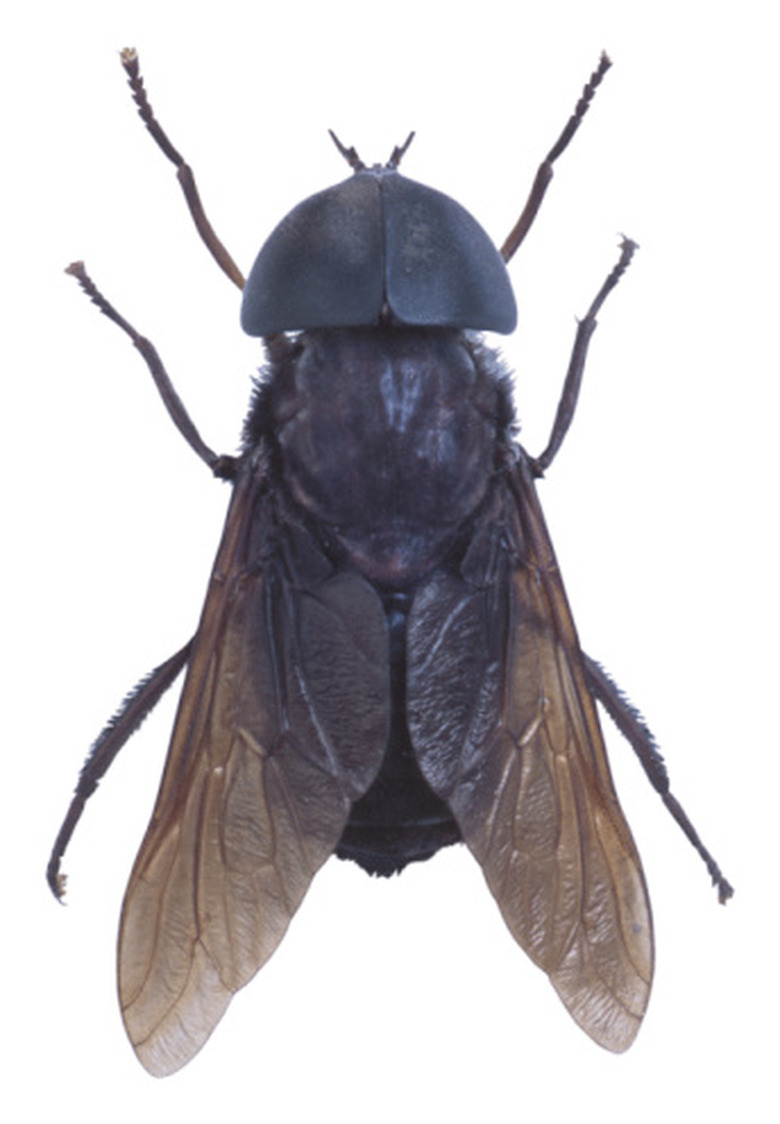Life Cycle Of A Horse Fly
Commonly reaching half an inch or longer in length, horse flies are larger than your average house fly. Though they have a similar life cycle to other flies, horse flies vary a bit in their feeding behavior. These insects are also pesky because they inflict a painful bite on livestock, and they aren't afraid to feed on humans as well. Like other blood-sucking insects, horse flies drink blood by piercing the skin with their sharp mouthparts.
What Is a Horse Fly?
What Is a Horse Fly?
A horse fly is any member of the taxonomic family Tabanidae. Like all true flies, researchers place these insects in the taxonomic order Diptera. Though individual species differ, these flies typically grow to be around half an inch in length. That might not sound very big until you consider that the average house fly measures just six millimeters long! They commonly feed on the blood of horses and other livestock using their sharp mouthparts. Some species will also feed on humans as well. Like mosquitoes, only female horse flies feed on blood. They do so for the production of eggs.
Life Cycle of a Horse Fly
Life Cycle of a Horse Fly
All horse flies go through a four-stage life cycle. They have an egg stage, a larval stage, a pupae stage and an adult stage. Each species has slightly different reproductive behavior. Adults typically choose a location near water to deposit their eggs. The incubation period of the eggs varies based on the temperature. Eggs hatch faster in warmer weather conditions. Once the eggs hatch, the larvae live within a moist environment, such as the mud of a lake or the water in a pond or puddle.
In many species, the larva dig down into the ground to metamorphose into the pupae stage. The amount of time they spend dormant underground varies based on the species. For example, in Tabanus lineola the larval period lasts approximately 48 days. The larvae often undergo several molts before reaching the pupae stage.
Most species remain in the pupae stage for a shorter period of time. For example, T. lineola remains in the pupae stage for 7 to 16 days. The pupae stage, along with the egg incubation period, shortens with increased temperature. Pupae in warmer environments mature into adult flies more quickly than those in colder environments.
What's the Average Horse Fly Lifespan?
What's the Average Horse Fly Lifespan?
Though each species has its own lifespan, the average adult horse fly lives for just a month or two. In most species, it takes approximately one year to complete an entire life cycle from egg all the way to adult. However, some species remain in the larval stage for longer periods. For example, Tabanus similis larva can remain in the larval stage for up to three years before metamorphizing into pupae! However, the pupae and adult stages of this species are similar to other species in their short duration.
Horse Fly Reproduction
Horse Fly Reproduction
Horse flies breed shortly after they emerge as adults from their pupae stage. The males of some species are known to congregate in areas with plants or shrubs that adult females often frequent. They wait for a female to fly by and pursue her in hopes of mating. In many cases, the female rejects the male's attempts to mate.
After the female accepts a breeding partner, she begins to search for a blood meal. Only the female drinks blood, and she must do so before she lays her eggs. After feeding, the female begins to search for an appropriate location to lay her eggs, such as the tips of grasses or rocky overhangs atop water bodies. Females of different species often have different preferences for where to lay their eggs.
Cite This Article
MLA
Zinni, Yasmin. "Life Cycle Of A Horse Fly" sciencing.com, https://www.sciencing.com/life-cycle-of-a-horse-fly-12531030/. 18 January 2022.
APA
Zinni, Yasmin. (2022, January 18). Life Cycle Of A Horse Fly. sciencing.com. Retrieved from https://www.sciencing.com/life-cycle-of-a-horse-fly-12531030/
Chicago
Zinni, Yasmin. Life Cycle Of A Horse Fly last modified March 24, 2022. https://www.sciencing.com/life-cycle-of-a-horse-fly-12531030/
